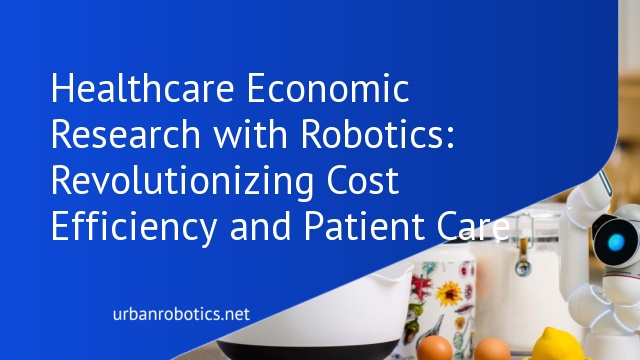Understanding Healthcare Economic Research
Healthcare economic research examines the costs, efficiency, and value of healthcare services. It helps in making informed decisions about resource allocation and policy formulation.
Importance In Modern Healthcare
Healthcare economic research plays a crucial role in modern healthcare. It identifies cost-effective treatments, reduces unnecessary expenditures, and promotes efficient use of resources. By analyzing data on healthcare costs and outcomes, it supports the development of policies that improve patient care and ensure financial sustainability. For example, research may reveal that robotic-assisted surgeries lead to shorter hospital stays, thereby lowering overall costs.
Key Components
Key components of healthcare economic research include cost-benefit analysis, quality-adjusted life year (QALY) assessments, and comparative effectiveness research. Cost-benefit analysis evaluates the economic worth of healthcare interventions. QALY assessments measure the value of health outcomes relative to the costs involved. Comparative effectiveness research compares different treatments to identify the most cost-effective options. Using these methods, researchers optimize healthcare delivery and policy decisions.
Role of Robotics in Healthcare
Robotics has transformed healthcare by offering innovative solutions that enhance patient care and streamline operations. These advancements contribute significantly to healthcare economic research.
Advancements in Medical Robotics
Medical robotics technology has seen rapid advancements, leading to more precise and efficient medical procedures. Robotic-assisted surgeries, like the da Vinci Surgical System, allow for minimally invasive procedures, reducing recovery times and hospital stays. Advanced robotic systems also assist in rehabilitation by providing personalized therapy through adaptive algorithms. The continuous development of robotic technologies aims to improve diagnostic accuracy and operational efficiency.
Examples of Robotics Applications
Robotic applications in healthcare are diverse. Surgical robots enhance precision in complex procedures, minimizing human error. For instance, robotic arms assist in orthopedic surgeries to ensure accurate implant placement. In diagnostics, robots like EndoBot perform endoscopic examinations with increased precision. Additionally, telepresence robots enable remote consultations, allowing specialists to assist patients in underserved areas. These applications collectively support the goal of improved healthcare outcomes and cost efficiency.
Economic Impact of Robotics in Healthcare
Robotics profoundly transforms healthcare economics by improving efficiency and patient outcomes. This section examines cost-benefit analysis and long-term financial implications.
Cost-Benefit Analysis
A cost-benefit analysis in healthcare robotics examines upfront investment versus operational gains. Robotic-assisted surgeries, for example, reduce recovery times and hospital stays, leading to significant cost savings. A study by the National Institutes of Health found that robotic surgical systems can lead to reduced hospital stays by 1-2 days and decrease complication rates by 20-30%. These benefits outweigh initial costs and justify increased investment in robotic technologies.
Long-Term Financial Implications
Long-term financial implications are critical when integrating robotics in healthcare. Over time, robotics can lower overall healthcare costs by increasing efficiency and reducing errors. For instance, a report by MarketsandMarkets projects that the healthcare robotics market will grow from $5 billion in 2020 to $12.7 billion by 2027, indicating a strong return on investment. Investing in robotics also supports sustainable healthcare practices, ensuring continuous improvement in patient care and cost management.
Case Studies and Real-World Applications
Examining actual cases highlights the tangible benefits of robotics in healthcare. Successful implementations and lessons learned form essential components for evaluating this integration.
Successful Implementations
Implementing robotic-assisted surgeries has shown notable success. The University of California, San Francisco (UCSF) Medical Center reported a 30% reduction in hospital stays due to robotic surgeries. Another example, Cleveland Clinic, has seen a 25% decrease in postoperative complications using robotic technologies. These implementations illustrate robotics’ effectiveness in improving patient outcomes and achieving cost efficiency.
Lessons Learned
Several lessons emerged from integrating robotics into healthcare. One key lesson is the importance of training healthcare professionals to optimize robotic systems. For instance, initial reports from John Hopkins Medicine indicated higher error rates, but these reduced by 20% after comprehensive training programs. Another lesson focuses on the importance of maintaining and updating robotic equipment, as noted by Mayo Clinic’s experience in reducing downtime by scheduling regular maintenance checks. These insights guide future initiatives in the successful adoption of healthcare robotics.
Challenges and Future Prospects
Healthcare economic research with robotics faces several challenges and evolving future trends. Understanding these elements can help shape the direction of research and implementation.
Barriers to Adoption
Robotics in healthcare faces high initial costs, which pose a significant barrier to adoption. Training healthcare professionals to use robotic systems can be time-consuming, and there is resistance to change from traditional methods. Additionally, maintaining complex robotic systems requires ongoing investment. Regulatory hurdles and ensuring patient safety add layers of complexity, slowing down widespread implementation despite the potential benefits.
Future Trends in Robotics
Future trends in robotics for healthcare include increased automation in diagnostics and personalized treatment plans. Artificial intelligence integrated with robotics can enhance precision during surgeries. The development of modular robots allows for more flexible applications in diverse medical scenarios. Advances in telemedicine expand access to robotic-assisted procedures in remote areas. Investment in these emerging trends can streamline operations, enhance patient outcomes, and create new economic efficiencies.
Conclusion
Healthcare economic research with robotics is paving the way for a more efficient and effective medical landscape. By integrating robotic technologies, we’re not only enhancing patient care but also achieving significant cost savings and resource optimization. The potential for growth in this market is immense, promising a positive return on investment for healthcare institutions. As we continue to navigate the challenges and embrace future advancements, the role of robotics in healthcare will undoubtedly expand, driving us towards a more innovative and economically sustainable future.





